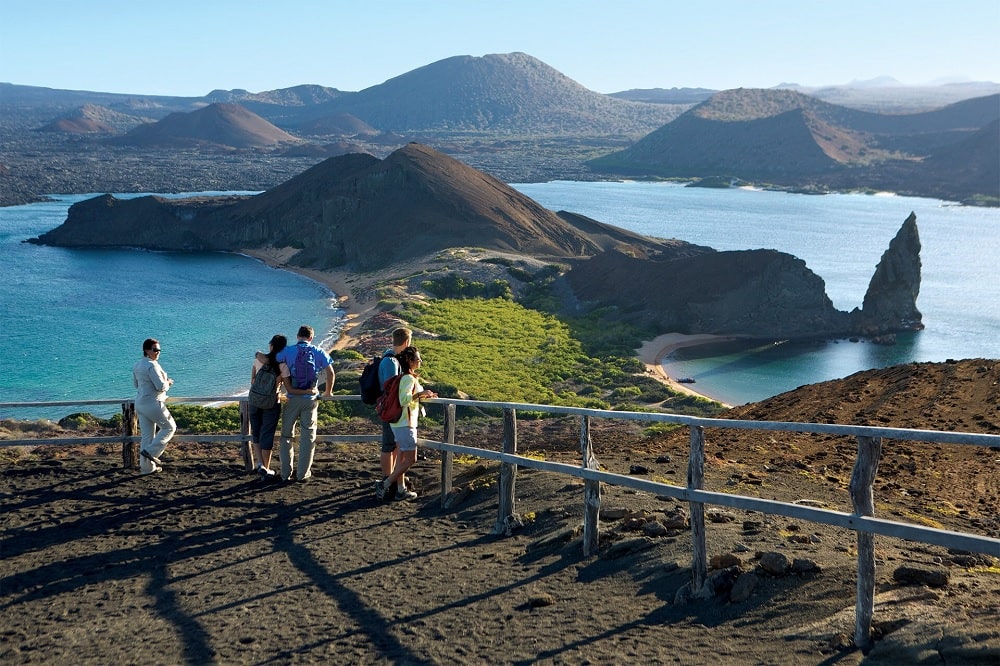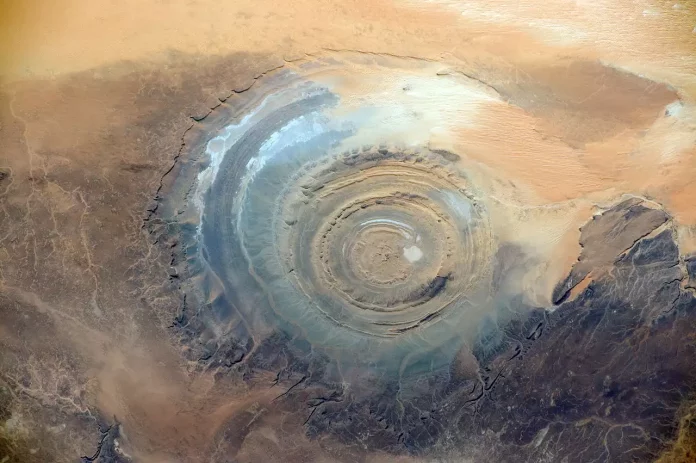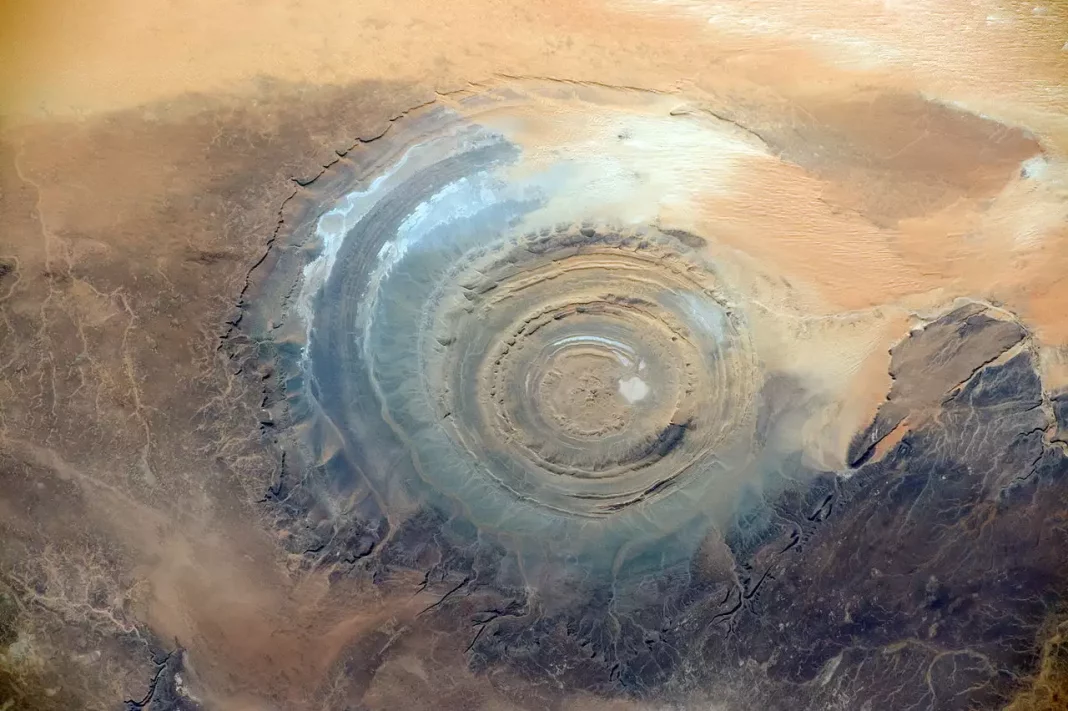The Galapagos Islands, Ecuador, are a unique and mesmerizing archipelago located in the Pacific Ocean, about 600 miles off the coast of South America. Known for their incredible biodiversity and untouched natural beauty, these islands have captivated the imagination of scientists, travelers, and nature enthusiasts for centuries. The Galapagos Islands are often referred to as a world natural wonder, and for good reason.
Formed by volcanic activity millions of years ago, the Galapagos Islands emerged from the ocean depths, creating a habitat unlike any other on Earth. This isolation allowed for the development of distinct species found nowhere else in the world. When Charles Darwin visited the Galapagos Islands in 1835, his observations of the unique flora and fauna played a crucial role in shaping his groundbreaking theory of evolution by natural selection. The islands’ mysterious allure and scientific importance have only grown since Darwin’s time.
Today, the Galapagos Islands, Ecuador, are a UNESCO World Heritage site, recognized for their outstanding universal value. The archipelago comprises 13 major islands, 6 smaller islands, and numerous islets and rocks, each with its own unique landscape and wildlife. The islands are home to a variety of species, including the famous giant tortoises, marine iguanas, and blue-footed boobies. These animals have adapted to the harsh conditions of their environment in remarkable ways, making the Galapagos a living laboratory of evolution.
Visitors to the Galapagos Islands are drawn by the promise of adventure and the chance to witness nature in its most pristine form. The islands offer a glimpse into a world where wildlife thrives without fear of humans, and where the natural processes of life and evolution continue to unfold largely undisturbed. Strict conservation efforts are in place to protect this delicate ecosystem, ensuring that the Galapagos Islands remain a natural wonder for future generations to explore and admire.
The Galapagos Islands, Ecuador, are more than just a group of islands; they are a testament to the wonders of nature and the mysteries of evolution. Their significance as a world natural wonder is undeniable, attracting visitors from all over the globe to experience their unparalleled beauty and scientific intrigue.
The Birth of the Galapagos Islands: Volcanic Origins
The Galapagos Islands, Ecuador, are a testament to the powerful natural forces that shape our planet. These islands were formed through intense volcanic activity, creating a unique environment that supports an incredible variety of life.
Millions of years ago, the Pacific Plate moved slowly over a hot spot, a plume of molten rock rising from deep within the Earth. As this magma reached the surface, it cooled and solidified, gradually building up the islands we know today. The oldest islands in the Galapagos archipelago are estimated to be between three and five million years old, while the youngest, like Fernandina and Isabela, are still geologically active and continue to change.
The volcanic origins of the Galapagos Islands, Ecuador, are evident in their rugged landscapes. Lava flows, craters, and calderas dominate the scenery, creating a dramatic and otherworldly terrain. These geological features are not just visually striking; they have also played a crucial role in shaping the islands’ ecosystems. The nutrient-rich soil from volcanic ash supports a variety of plant life, which in turn provides food and habitat for the unique animals of the Galapagos.
Volcanic activity has not only created the islands but also continues to influence them. Eruptions and lava flows periodically reshape the landscape, offering a rare opportunity to witness geological processes in action. For instance, the 2018 eruption of the Sierra Negra volcano on Isabela Island dramatically altered parts of the island, demonstrating the dynamic nature of these volcanic origins.

The isolation of the Galapagos Islands, Ecuador, combined with their volcanic birth, has led to the development of species found nowhere else on Earth. The harsh, varying conditions across the islands have driven the evolution of plants and animals uniquely adapted to their environments. Marine iguanas, which feed on underwater algae, and flightless cormorants, which have adapted to hunting in the water, are just two examples of how life has evolved to thrive in this volcanic landscape.
In summary, the birth of the Galapagos Islands through volcanic activity has created a unique and dynamic environment. These islands are a living example of the Earth’s geological processes at work, offering an unparalleled natural laboratory for scientists and a stunning natural wonder for visitors. The volcanic origins of the Galapagos Islands, Ecuador, continue to shape their landscapes and ecosystems, making them one of the most fascinating places on our planet.
A Unique Ecosystem: The Flora and Fauna of the Galapagos
The Galapagos Islands, Ecuador, are renowned for their unique ecosystem, which supports a remarkable diversity of plant and animal species. This extraordinary environment, shaped by isolation and unique climatic conditions, has allowed life to evolve in ways that are found nowhere else on Earth.
One of the most iconic inhabitants of the Galapagos Islands is the giant tortoise. These majestic creatures, which can live for over a hundred years, are found on several islands in the archipelago. Each island’s tortoise population has distinct characteristics, illustrating the concept of adaptive radiation, where species evolve differently based on their environments. The giant tortoises are a symbol of the Galapagos and play a crucial role in their ecosystems, helping to shape the vegetation by feeding on various plants.
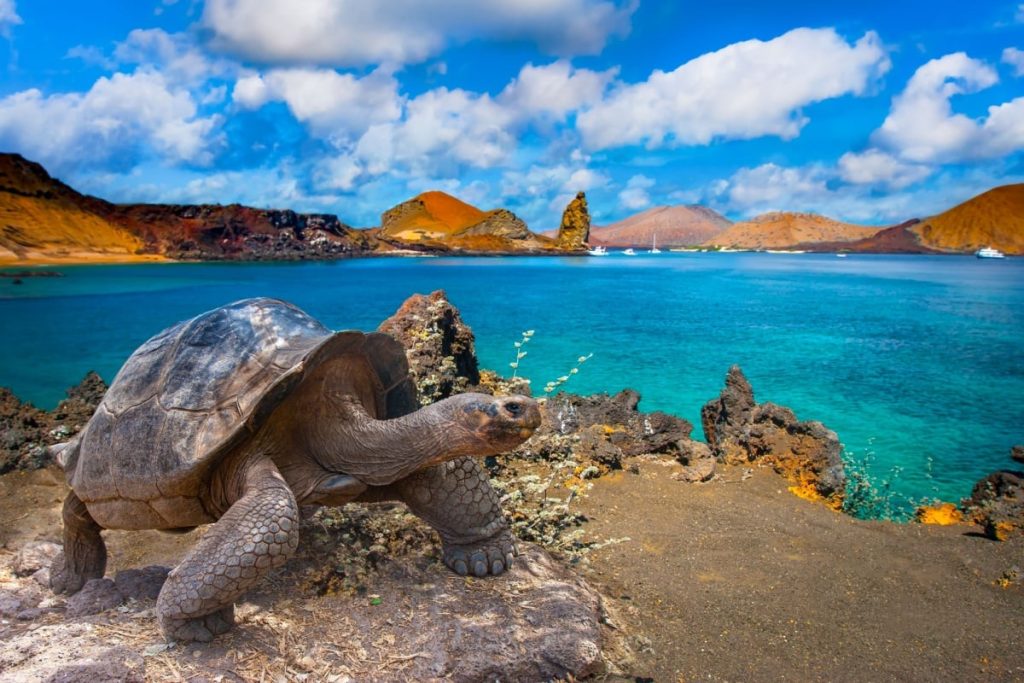
Another fascinating species is the marine iguana, the only iguana in the world that has adapted to life in the ocean. These reptiles can dive into the sea to feed on algae, demonstrating an extraordinary adaptation to their environment. On land, they bask on the rocky shores to regulate their body temperature after their cold underwater forays.
Birdlife in the Galapagos Islands, Ecuador, is equally remarkable, with species like Darwin’s finches standing out. These small birds were crucial to Charles Darwin’s studies, as their varied beak shapes and sizes provided key insights into the process of natural selection. Each finch species has adapted to specific food sources on different islands, showcasing the incredible diversity within a single group of birds.
The Galapagos Islands are also home to playful sea lions, which can often be seen lounging on beaches or frolicking in the surf. Unlike elephants, ostriches, and yaks, which are not native to the islands, sea lions are an integral part of the Galapagos ecosystem. Their presence adds to the vibrant and dynamic nature of life in the archipelago.
The flora of the Galapagos Islands is just as unique as its fauna. The islands host a variety of plant species, including the endemic Scalesia, often referred to as the “Galapagos daisy.” These plants have adapted to the diverse microclimates found across the islands, from arid lowlands to humid highlands. Cacti are also common, particularly the prickly pear, which provides food and habitat for many animals, including the land iguanas.
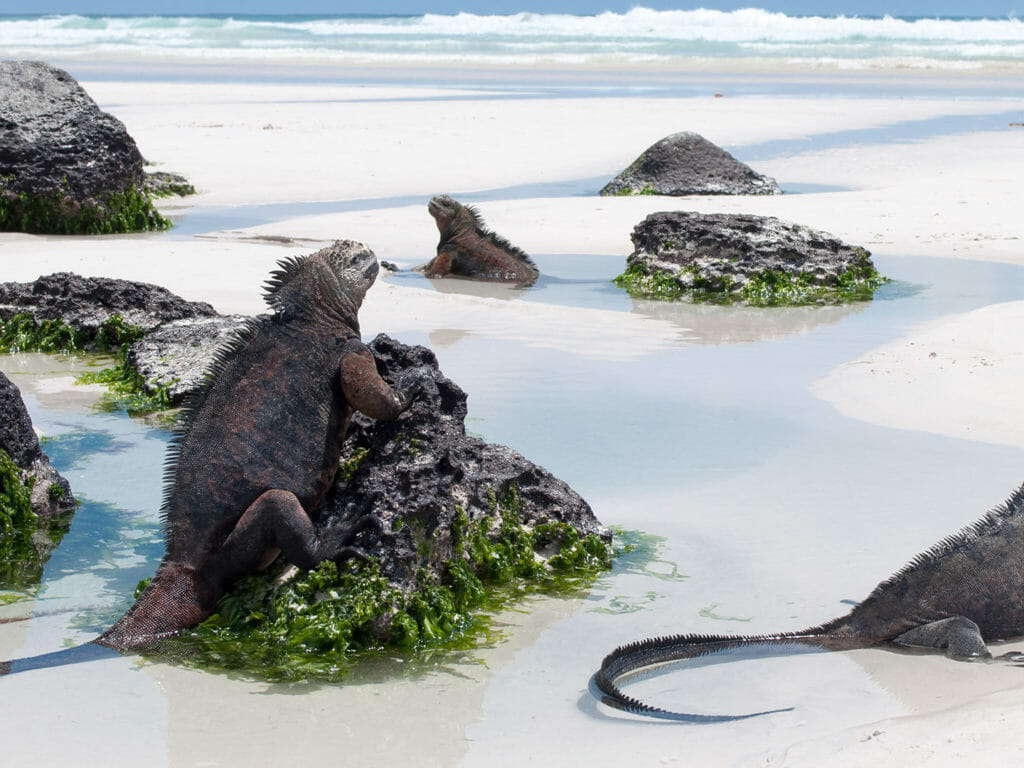
The Galapagos Islands, Ecuador, boast a unique ecosystem that supports an incredible array of flora and fauna. From the giant tortoises and marine iguanas to Darwin’s finches and sea lions, the islands are a living showcase of evolution and natural diversity. This exceptional environment continues to intrigue scientists and nature lovers alike, offering a glimpse into the wonders of life on Earth.
Charles Darwin and the Galapagos: Evolutionary Discoveries
The Galapagos Islands, Ecuador, hold a special place in the history of science due to the groundbreaking observations made by Charles Darwin during his visit in 1835. This visit was a key moment in the development of the theory of evolution, fundamentally changing our understanding of life on Earth.
Charles Darwin arrived at the Galapagos Islands aboard the HMS Beagle, a British survey ship, on September 15, 1835. He was just 26 years old at the time, but his keen observations during his five-week stay would become pivotal to his scientific career. The Galapagos, with their isolated location and diverse species, provided a unique natural laboratory for studying evolution.
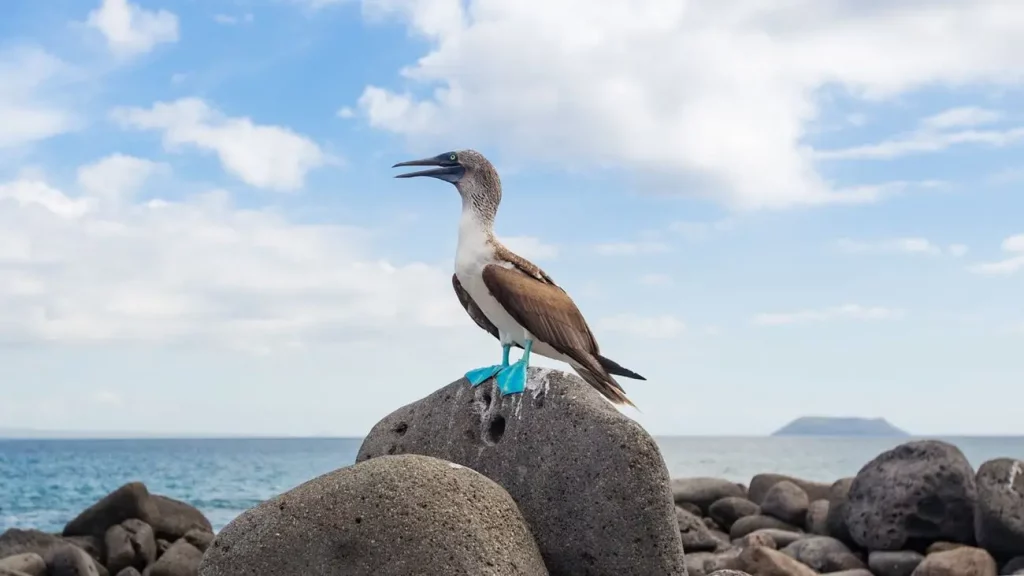
Darwin was struck by the remarkable variety of wildlife on the islands, particularly the differences in species from one island to another. One of his most significant observations involved the finches that now bear his name. Darwin noted that while all the finches were similar, each species had a different beak shape adapted to its specific diet and environment. This variation suggested that the finches had evolved from a common ancestor but had adapted to the distinct conditions on each island, a concept now understood as evolution by natural selection.
In addition to the finches, Darwin observed differences in the giant tortoises on different islands. He noticed that the tortoises had different shell shapes depending on the island they inhabited. For instance, tortoises from islands with lush vegetation had dome-shaped shells, while those from drier islands had saddleback shells, which allowed them to reach higher vegetation.
These observations led Darwin to question the fixed nature of species and consider the possibility that they could change over time in response to their environment. This idea was revolutionary and laid the groundwork for his theory of natural selection. Darwin’s insights from the Galapagos Islands, Ecuador, were instrumental in the formulation of his seminal work, “On the Origin of Species,” published in 1859. In this book, Darwin proposed that species evolve over time through a process of natural selection, where individuals with advantageous traits are more likely to survive and reproduce.

The significance of Darwin’s discoveries in the Galapagos extends beyond the scientific community. His work has profoundly influenced our understanding of biology and the interconnectedness of all life forms. Today, the Galapagos Islands continue to be a critical site for evolutionary research, attracting scientists from around the world who build on Darwin’s legacy.
Charles Darwin’s visit to the Galapagos Islands, Ecuador, was a turning point in the study of evolution. His meticulous observations of the islands’ unique species led to the development of the theory of natural selection, fundamentally changing our understanding of the natural world. The Galapagos Islands remain a living testament to the power of observation and the endless possibilities of scientific discovery.
Modern Research and Conservation Efforts
The Galapagos Islands, Ecuador, are not just a historical treasure trove; they are also a living laboratory that continues to draw researchers from around the globe. Modern research and conservation efforts are crucial to preserving the unique biodiversity of the Galapagos Islands, ensuring that this natural wonder remains intact for future generations.
In recent years, the Charles Darwin Foundation (CDF) has been at the forefront of scientific research in the Galapagos. Established in 1959, the CDF operates the Charles Darwin Research Station on Santa Cruz Island, where scientists conduct ongoing studies on the islands’ ecosystems. These studies are vital for understanding the complex interactions between species and their environments.
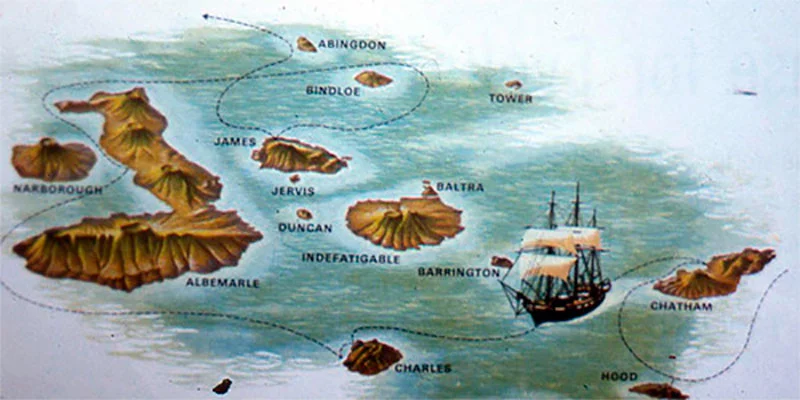
One significant area of research focuses on the impact of invasive species. Non-native animals and plants, introduced either intentionally or accidentally, pose a serious threat to the native biodiversity of the Galapagos Islands, Ecuador. For example, the introduction of rats and goats has had devastating effects on native species like the giant tortoises and ground-nesting birds. Recent efforts have focused on eradicating these invasive species through coordinated campaigns, which have shown promising results in restoring native habitats.
Marine conservation is another critical focus. The Galapagos Marine Reserve, established in 1998, is one of the largest and most biologically diverse marine protected areas in the world. Researchers monitor the health of marine ecosystems, studying species such as the Galapagos sea lion and the hammerhead shark. This research is essential for implementing effective conservation strategies and protecting the marine life that is so integral to the islands’ ecological balance.
Recent discoveries continue to underscore the ecological importance of the Galapagos Islands. In 2019, scientists discovered a new species of pink iguana on Wolf Volcano, highlighting the ongoing potential for new species identification in this unique environment. Additionally, genetic studies of the Galapagos finches continue to reveal insights into evolutionary processes, further enhancing our understanding of natural selection.
Conservation efforts are not limited to scientific research; they also involve local communities and international cooperation. The Galapagos National Park, established in 1959, works closely with local residents to promote sustainable practices and ecotourism. Education and outreach programs aim to involve the local population in conservation efforts, ensuring that they are active participants in preserving their natural heritage.
International support plays a significant role in these efforts. Organizations such as the World Wildlife Fund (WWF) and the Galapagos Conservancy provide funding and expertise to support conservation projects. These collaborations are essential for addressing the multifaceted challenges of preserving the Galapagos Islands’ unique biodiversity.
Modern research and conservation efforts are vital for the continued protection of the Galapagos Islands, Ecuador. Through scientific study, invasive species management, marine conservation, and community involvement, these efforts aim to safeguard the unique biodiversity that makes the Galapagos a natural wonder. The ongoing research and discoveries not only highlight the islands’ ecological importance but also inspire global efforts to preserve our planet’s natural heritage.
The Galapagos Today: Tourism and Its Impact
The Galapagos Islands, Ecuador, have become a top destination for eco-tourism, attracting thousands of visitors each year eager to experience the unique biodiversity and pristine landscapes. However, the increasing human activity poses significant challenges to maintaining the delicate ecological balance of this natural wonder.
In recent years, the number of tourists visiting the Galapagos Islands has steadily increased. According to the Galapagos National Park, the islands received around 271,000 visitors in 2019, a significant rise from previous decades. Tourism has brought substantial economic benefits to the region, providing jobs and boosting the local economy. The tourism industry has created opportunities for local residents in hospitality, guiding services, and conservation-related employment.

However, the surge in tourism also brings a range of environmental challenges. The increase in visitor numbers has put pressure on the islands’ infrastructure and natural resources. The construction of hotels, restaurants, and other facilities to accommodate tourists has led to habitat destruction and increased waste production. Managing this waste is a constant struggle, as improper disposal can harm the fragile ecosystems of the Galapagos Islands, Ecuador.
Moreover, the influx of tourists raises the risk of introducing invasive species, which can severely disrupt the native flora and fauna. Strict biosecurity measures are in place, including inspections and guidelines for visitors to minimize this risk. The Galapagos National Park has implemented rigorous protocols to ensure that tourism activities, such as snorkeling, hiking, and wildlife watching, are conducted sustainably and with minimal impact on the environment.
To balance the economic benefits of tourism with the need to protect the islands’ ecosystems, the Galapagos government and various organizations have been working on sustainable tourism initiatives. These include promoting low-impact tourism, limiting the number of visitors through permits, and enhancing environmental education for both tourists and locals. Efforts are also being made to develop eco-friendly infrastructure and improve waste management systems.
Community involvement is crucial in these conservation efforts. Local residents are encouraged to participate in protecting their natural heritage, and many are actively involved in sustainable tourism practices. Additionally, revenue from tourism is reinvested into conservation projects and research, further supporting the preservation of the Galapagos Islands.
The Galapagos Islands, Ecuador, face the dual challenge of promoting tourism for economic benefit while safeguarding their unique ecosystems. Sustainable tourism practices and strict regulations are essential to achieving this balance. As visitor numbers continue to grow, ongoing efforts by the government, conservation organizations, and the local community will be critical in ensuring that the Galapagos Islands remain a pristine and thriving natural wonder for generations to come.
The Enduring Legacy of the Galapagos Islands
The Galapagos Islands, Ecuador, are an extraordinary symbol of natural wonder and scientific discovery. From their volcanic origins to their unique ecosystems, these islands have fascinated and inspired countless generations. The legacy of the Galapagos Islands is one of remarkable biodiversity, groundbreaking scientific research, and ongoing conservation efforts.
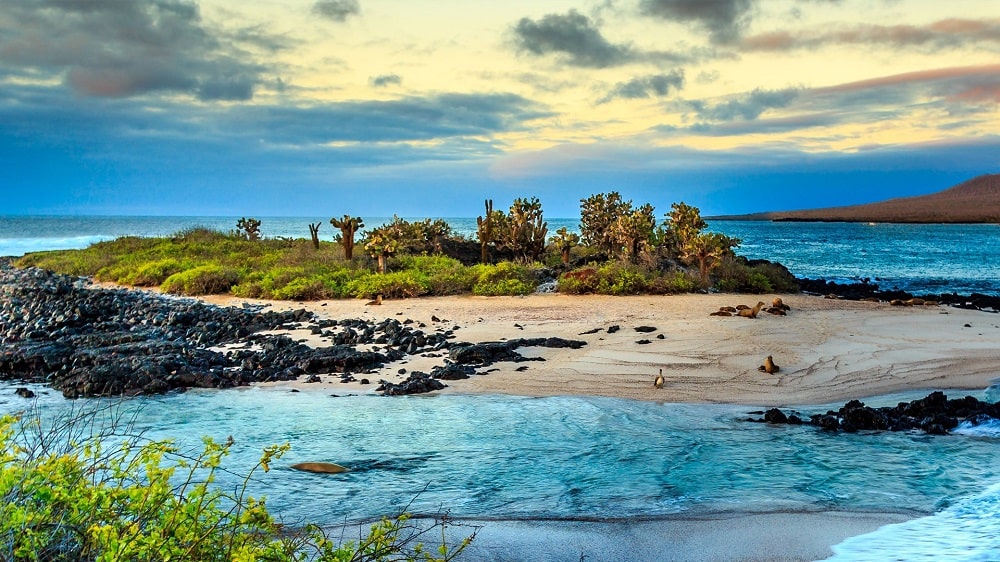
The Galapagos Islands were formed millions of years ago through volcanic activity, creating a unique environment that supports an array of plant and animal species found nowhere else on Earth. This isolation allowed species to evolve in distinctive ways, a phenomenon observed by Charles Darwin during his visit in 1835. Darwin’s observations of the islands’ flora and fauna, particularly the finches and giant tortoises, played a crucial role in the development of his theory of evolution by natural selection.
Modern research and conservation efforts are vital in preserving the unique biodiversity of the Galapagos Islands, Ecuador. Scientists continue to study the islands’ ecosystems, focusing on issues such as invasive species and marine conservation. Efforts to eradicate invasive species and protect native habitats have shown promising results, demonstrating the importance of continuous research and intervention.
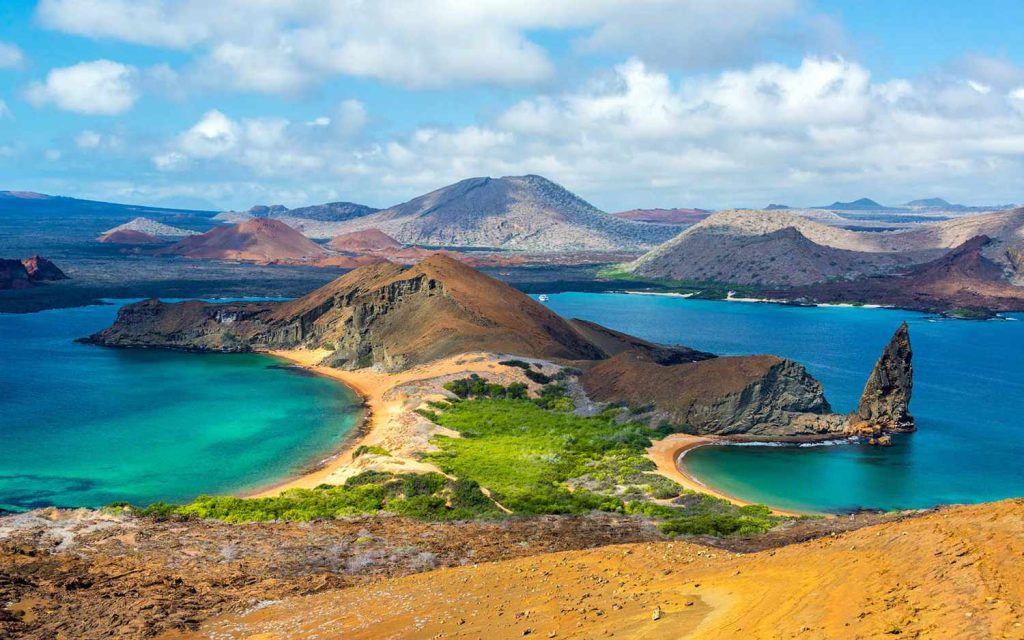
Tourism, while economically beneficial, presents challenges to maintaining the ecological balance of the Galapagos Islands. The increase in visitors has led to habitat destruction and the risk of introducing invasive species. However, sustainable tourism initiatives and strict regulations help mitigate these impacts, ensuring that the natural beauty of the islands is preserved.
The enduring legacy of the Galapagos Islands is also reflected in their influence on science and education. The discoveries made here have profoundly impacted our understanding of evolution and natural selection. Today, the islands continue to serve as a living laboratory for scientists and a source of inspiration for nature enthusiasts.
As we reflect on the significance of the Galapagos Islands, it is clear that their preservation is essential. The ongoing efforts of researchers, conservationists, and the local community play a crucial role in protecting this natural wonder. The Galapagos Islands, Ecuador, stand as a testament to the beauty and complexity of the natural world, reminding us of the importance of preserving our planet’s biodiversity.
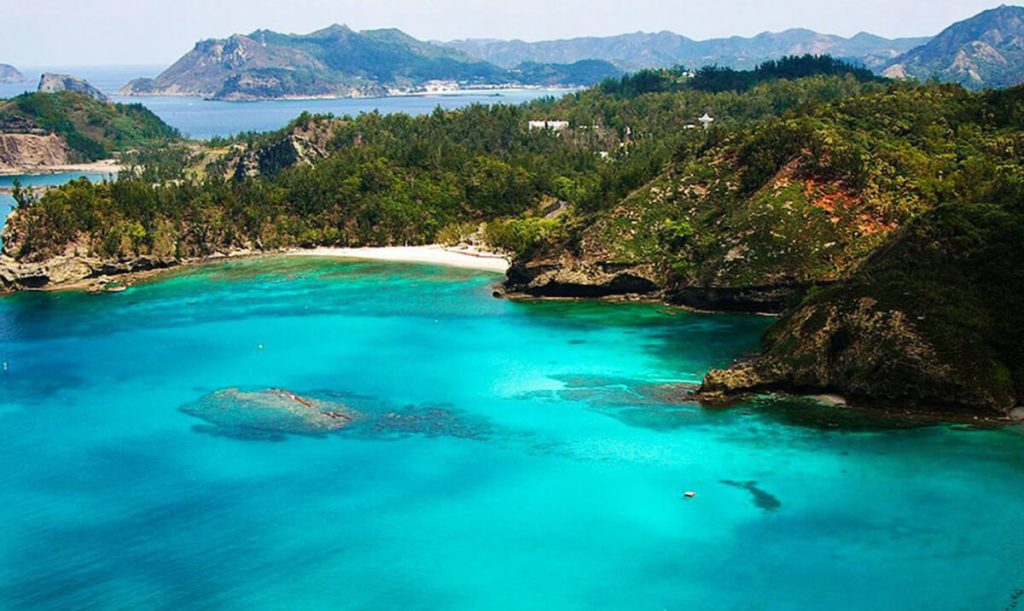
In conclusion, the Galapagos Islands’ legacy is one of unparalleled natural beauty, scientific discovery, and conservation. They continue to captivate and inspire people worldwide, emphasizing the need for sustainable practices to protect their unique ecosystems. Explore more about the geological wonders of our world, including How Were the Chocolate Hills Formed? The intriguing Chocolate Hills of Bohol, Philippines. We encourage you to explore further, share your thoughts, and engage with related content to deepen your understanding of this remarkable archipelago.
Frequently Asked Questions (FAQs)
1. Why are the Galapagos Islands important?
The Galapagos Islands are crucial for their unique biodiversity and contribution to Charles Darwin’s theory of evolution.
2. How many islands make up the Galapagos archipelago?
The Galapagos Islands consist of 13 major islands, 6 smaller islands, and numerous islets and rocks.
3. What animals are native to the Galapagos Islands?
Native species include the giant tortoises, marine iguanas, and blue-footed boobies, uniquely adapted to their environments.
4. What is the best time to visit the Galapagos Islands?
The best time to visit is during the dry season from June to December, when wildlife is most active.
5. How are the Galapagos Islands protected?
The Galapagos Islands are protected as a UNESCO World Heritage site, with strict conservation measures and visitor regulations in place.
Use of Our Content
⚠️ Content on “Mystery Uncover” is protected under US and International Copyright Laws.
You are free to reuse, republish, and share our content by giving credit to the source as Mystery Uncover with a link to the original material on mysteryuncover.com.


